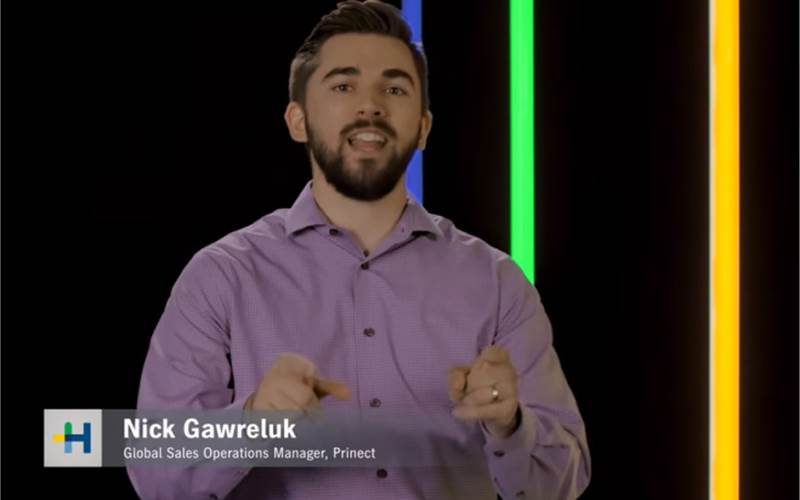Day one of Heidelberg Innovation Week: Print shop automation with Prinect
Through his video note at the Heidelberg Innovation Week 2020, Nick Gawreluk, global sales operation manager, Prinect, explained how Artificial intelligence (AI), smart user guidance and autonomous production are an integral part of Heidelberg’s range of innovations for commercial printing.
19 Oct 2020 | By PrintWeek Team
According to Gawreluk, Heidelberg Prinect employs a 'push to stop end-to-end' approach which enables a comprehensive production process to become a reality with print shop automation. But how does Prinect achieve this optimal print production process?
With the help of a series of systematic technologies integrated into its workflow, says Gawreluk, such as a plate to unit system, which brings print trolleys and printing plates to the press in a linked configuration, while a smart batch logic unit links the jobs with these trolleys and plates. At that, a plate ID ensures the right plate is in the right printing unit at the right time.
Now, once the jobs are scheduled in the workflow system, the Prinect production manager and scheduler arranges them in a cost-effective production sequence (the production and supply of printing plates are based on these sequences) as even the smallest job-to-job change can create significant savings in time and wastage. The scheduler comprises a tool named Autofill which ensures fully automated job loading towards the press chart queues, said Gawreluk.
In terms of Prinect’s automatic registration offerings, Gawreluk, explained, “With up to 20 jobs per hour, a printer has no time to make manual fine register adjustments. Hence, through our workflow system, we calculate the paper stretch and compensate it before the plates are exposed. This substantially prevents waste and saves a lot of makeready time.”
The company also offers an intelligent assistant system known as the Prinect Press Center, which automatically selects the job sequence and relieves the operators of routine tasks. It can be accessed through its application on a smartphone or a tablet. Simply put, a system enabled real-time data tracks the pre-press and post-press processes and sends data to the Press Center. Further, a system named Smart BI sends this data to dashboards with the provision of visual analysis. The pre-setting data of a job is directly made available to the press while Prinect’s patented algorithm Intellistart 3 calculates all makeready process and provides maximum transparency throughout the job changeover.
“Our workflow system constantly provides data throughout the print production process. And once this data has been recorded, every individual and unit are up-to-date with the latest information about the job. This reduces operator interventions and minimises touchpoints in the process,” said Gawreluk.
To easily interpret and make use of this available data, Prinect has created an Intelligent Dynamic Production View that automatically shows the operator the right display at the right time. “It's like a navigation assistant that guides you throughout the entire print production process. For instance, before reaching the target print run the screen automatically switches to ‘job change mode’ and the operator can check the job parameters again and take corrective actions wherever necessary. In addition, our Intelliline technology checks on the process phase of every individual printing unit and ensures whether manual interventions are required,” he explains.
In general, a press has three washing programmes, short, medium and intensive. In most cases, an operator chooses the intensive wash setting, which consumes more detergent than required. Similarly, at times, operators also use more powder for small area coverages. To tackle such problems, Prinect offers wash and powder assistants. The powder assistant provides clear powder recommendations, enables a reduction in powder contamination in the delivery stage and minimises problems in the finishing department. While the wash assistant focuses on saving detergent and efficient water consumption.
Last but not the least, the workflow system also controls finishing operations. For instance, the direct processing of the waste pile or barcode readings and signature detections, ensuring a complete end-to-end optimised print production process.















 See All
See All